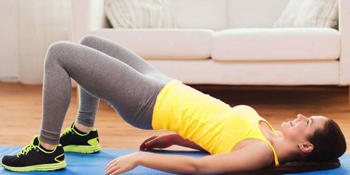Houston, Jan 10: People exercising only on weekends need to stop feeling guilty for not being able to workout regularly due to their busy lifestyle as they see the same health benefits as those who do it daily, a study has said. Exercise is one of the best ways to avoid chronic diseases like diabetes and cancer, as well as an early death.
 But it can be tough to squeeze into a schedule: Health experts recommend about 150 minutes of moderate activity, or 75 minutes of vigorous, breath-sapping exercise, each week. Since daily exercise is not realistic for everyone, researchers decided to study whether people who tend to cram their weekly exercise into one or two days on the weekend (so-called "weekend warriors") get the same benefits as those who exercise daily.
But it can be tough to squeeze into a schedule: Health experts recommend about 150 minutes of moderate activity, or 75 minutes of vigorous, breath-sapping exercise, each week. Since daily exercise is not realistic for everyone, researchers decided to study whether people who tend to cram their weekly exercise into one or two days on the weekend (so-called "weekend warriors") get the same benefits as those who exercise daily.
In the new research published in JAMA Internal Medicine, they found that how often a person exercises might not make a difference in determining how long a person lives. O'Donovan, a research associate in the Exercise as Medicine programme at Loughborough University in England, and his colleagues analyzed data from national health surveys of more than 63,000 people, conducted in England and Scotland.
People who said they exercised only one or two days a week lowered their risk of dying early from any cause by 30 per cent to 34 per cent, compared to people who were inactive. But what was more remarkable was that people who exercised most days of the week lowered their risk by 35 per cent: not very different from those who exercised less.
Researchers saw benefits for people who squeezed the entire recommended 150 minutes per week into one or two days, as well as for people who did not quite meet that threshold and exercised less. "The main point our study makes is that frequency of exercise is not important. There really doesn't seem to be any additional advantage to exercising regularly. If that helps people, then I'm happy," says O'Donovan.
The results remained significant even after O'Donovan accounted for other variables that could explain the relationship, including a person's starting BMI. In fact, the benefits were undeniable for people of all weights, including people who were overweight and obese.
O'Donovan stresses that his results focus specifically on moderate-to-vigorous exercise people did in their free time, and they do not apply to housework or physical activity on the job, since the surveys did not ask about those. The study does, however, include brisk walking, which he says is a good way to start an exercise regimen for people eager to take advantage of the findings.





Comments
Add new comment